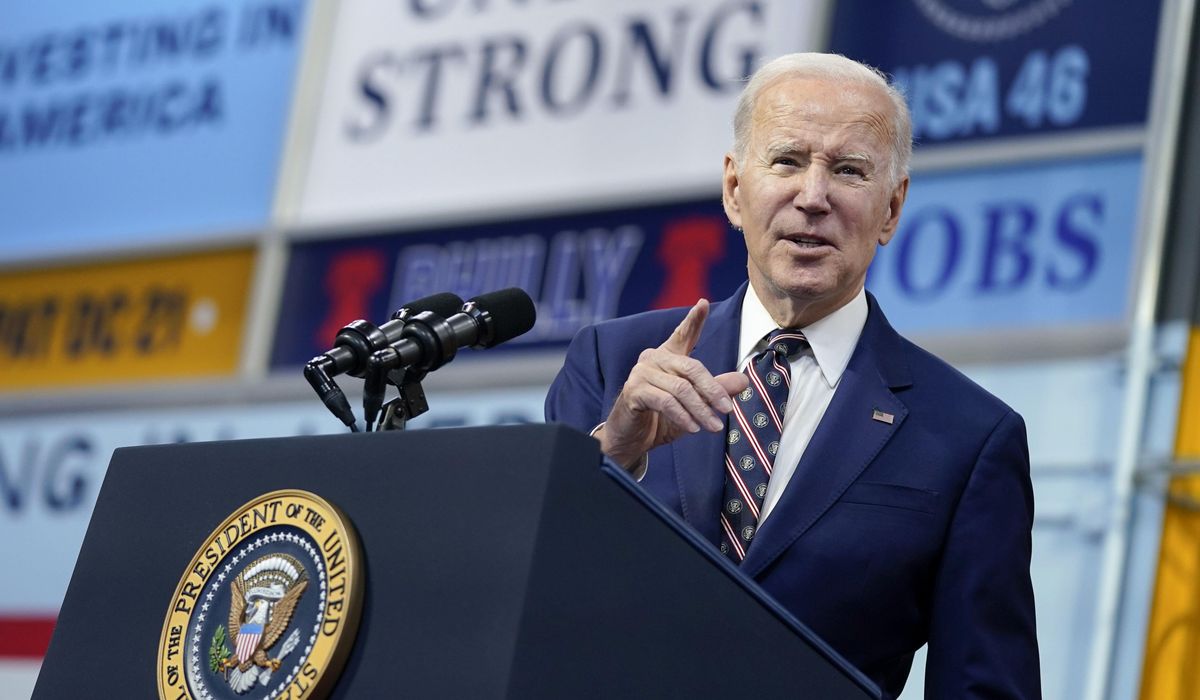


The folks at NASA have to be wondering what they did to anger President Biden.
The space agency is poised to see a cut of 3% of its workforce next year under Mr. Biden’s new budget — which is odd, because every other department and independent agency is holding serve or seeing an increase, in many cases a substantial increase.
Indeed, Mr. Biden’s new budget continues one of the fastest expansions of the federal bureaucracy in U.S. history, with roughly 75,000 more non-defense employees added to the government’s rolls in just one year. That’s a 5% increase.
“The Imperial City on the Potomac keeps growing larger and larger,” said Chris Edwards, editor of DownsizingGovernment.org and an expert at the Cato Institute.
President Trump left office in 2021 with 2.183 million Executive Branch employees, excluding the Postal Service. Mr. Biden oversaw a small hike of just a few thousand positions in 2022. But over the last two years, he’s kicked things up, adding 88,400 employees in 2023 and asking for 81,700 more in 2024.
Mr. Biden projects the Executive Branch non-Postal Service workforce will hit 2.356 million in 2024.
SEE ALSO: Biden team eyeing $5B to develop the next generation of COVID vaccines, treatments
That spending plan needs the approval of Congress, but should it hold, it would mean Treasury and Labor Departments that have grown more than 20% over the last two years. Agriculture, Energy, Health and Human Services, Housing and Urban Development, Interior and Veterans Affairs will each have grown 10% or more.
Some departments have grown far more slowly.
The State Department would be up just 2% over two years, and just 1% for 2024, under Mr. Biden’s plan. Homeland Security, grappling with the worst immigration chaos in modern history, would grow just 2.8%.
But it’s the lack of cutting that was particularly striking.
Mr. Edwards said the employment is another reflection of the massive spending binge the government has been on under Mr. Biden.
“It’s almost like they’re not prioritizing,” he said. “In every department they have places where they want to expand.”
It’s not clear why NASA, which is preparing for its first manned moon shot in 50 years next year, is facing the ax. Mr. Biden does plan a 7% funding increase, even as he sees fewer employees.
The employee cuts occur across all of NASA’s 10 centers, though the Goddard Space Flight Center in the Maryland suburbs of Washington and the Marshall Space Flight Center in Alabama take the biggest hits.
The agency didn’t respond to inquiries for this report.
Mr. Biden’s staff-up for the rest of the departments and agencies reverses a longer-term trend of a leaner federal government.
When President Trump left office in 2021, nine of the 15 departments had less staff than they did in 2013. If Mr. Biden’s new budget comes to fruition, all of them will have replenished their ranks except for the State Department, which would be 2,500 employees short of the 33,200 it had in 2013.
Veterans Affairs is the big winner, with Mr. Biden projecting more than 450,000 employees next year. In 2013 it had just 313,000.
Staffing increases are drawing attention on Capitol Hill, where Republicans warned agencies against getting too comfortable with hiring based on one-time money from Mr. Biden’s pandemic-era legislation.
In budget hearings with agency chiefs last month, Rep. Mike Simpson, Idaho Republican, raised the prospect of a looming staffing “cliff” where agencies have hired people then all of a sudden run out of the one-time money and either have to fire them or beg Congress for a massive new infusion of cash.
“We’re going to hit an employee cliff,” Mr. Simpson said.
Interior Department Secretary Deb Haaland insisted they’ll be prepared. She said agencies are being careful to tell hires that the jobs under the one-time money are temporary, and they’re moving slowly on the actual hiring.
The Treasury Department could also face a future crunch with the IRS, which got a massive $80 billion infusion of cash in Mr. Biden’s budget-climate change package last year.
A lot of that will go into personnel. But the funding only lasts a decade, creating a possible cliff in 10 years.
The IRS says it’s just making up for lost time. In 2010 it had 95,370 employee positions. It ended last year with 80,006 or nearly 20% fewer. The agency has indicated it wants to get back to that 2010 level, then go further, hiring an army of auditors to go after high-income taxpayers.
Overall, the federal workforce remains older than the average.
The Office of Personnel Management said that in 2022 nearly 29% of the government’s civilian employees were age 55 or older. Just 8.3% were under age 30. In the general workforce, by comparison, 23.6% of workers are under age 30 and 23.3% are 55 or older.
The federal workforce is 55% male.
Nearly 30% are veterans, 18.4% of federal employees are deemed to have some disability and 2.5% had what the government terms a “targeted disability” — a range of conditions ranging from paralysis to missing limbs to blindness to autism.
More than 18% of the federal workforce is Black, 7% is Asian and nearly 10% is Hispanic.
That is decidedly more Black and less Hispanic than the general population.
• Stephen Dinan can be reached at sdinan@washingtontimes.com.
